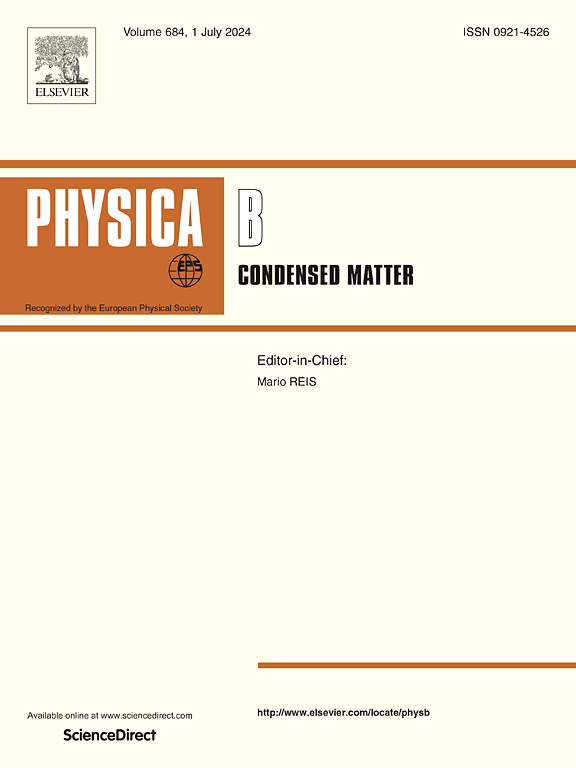Synthesis and physical characterization of ZnW1-xInxO4 nanostructures for hydrogen production
IF 2.8
3区 物理与天体物理
Q2 PHYSICS, CONDENSED MATTER
引用次数: 0
Abstract
ZnW1-xInxO4 (x = 0, 0.02, 0.05, 0.07, 0.1) samples were synthesized utilizing the hydrothermal procedure. Synchrotron x-ray diffraction patterns were analyzed applying Rietveld refinement methodology to find out the variation in unit cell parameters, crystallite dimension, atomic positional coordinates, and occupancy values upon doping with different In-concentration (x). Upon doping with In, analysis manifested that both Ni- and W-octahedrons exhibited increased distortion that would engender a polarization moment. Analysis of the measured Raman spectrum confirmed the distortion occurred in the WO6 octahedra by In-doping, where the vibrational modes were shifted or split. The chemical composition and the oxidation states of elements present were investigated using XPS and EDS analyses. The Eg values of the ZnW1-xInxO4 samples are 3.93, 3.9, 3.93, 3.94, and 4.04 eV for x = 0, 0.02, 0.05, 0.07, 0.1 respectively. Photoluminescence (PL) intensity was almost completely quenched upon doping with indium which signifies optimal charge separation conducive to enhanced photocatalytic performance. The current ZnW1-xInxO4 samples were tested as effective catalysts for hydrogen production via sodium borohydride (NaBH4) hydrolysis and methanolysis. Samples with indium content 7% or 5% demonstrated the highest generation rates of 6332 mL min-1g-1 for methanol and 385 mL min-1g-1 for water, respectively. The activation energy (Ea) of the hydrolysis of NaBH4 over ZnW0.95In0.05O4 as a catalyst was determined. The hydrogen production rate increased with increasing temperature. The activated energy was calculated to be 54.87 kJ/mol.
求助全文
约1分钟内获得全文
求助全文
来源期刊

Physica B-condensed Matter
物理-物理:凝聚态物理
CiteScore
4.90
自引率
7.10%
发文量
703
审稿时长
44 days
期刊介绍:
Physica B: Condensed Matter comprises all condensed matter and material physics that involve theoretical, computational and experimental work.
Papers should contain further developments and a proper discussion on the physics of experimental or theoretical results in one of the following areas:
-Magnetism
-Materials physics
-Nanostructures and nanomaterials
-Optics and optical materials
-Quantum materials
-Semiconductors
-Strongly correlated systems
-Superconductivity
-Surfaces and interfaces
 求助内容:
求助内容: 应助结果提醒方式:
应助结果提醒方式:


